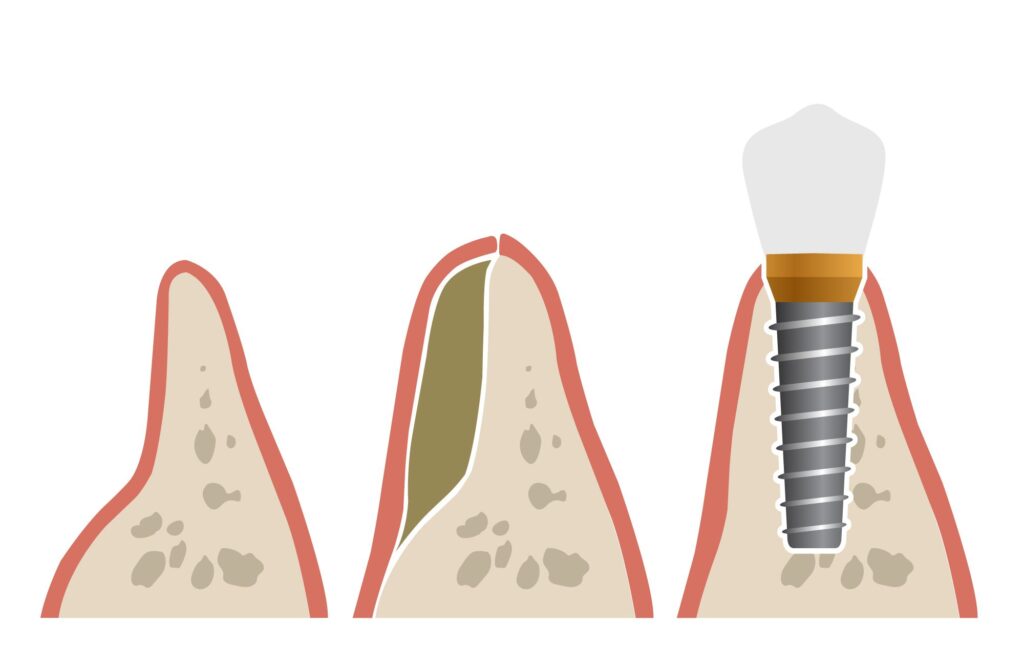
While the ultimate goal of professional dental care is to help patients maintain the strength, health, and beauty of their natural teeth, Dr. Kalil Abide understands that tooth loss is a reality for many people. Individuals who have lost one or more teeth can undergo restorative dentistry treatment to rebuild the smile and restore oral functions.
Dental implants are surgically placed titanium screws that provide a foundation for a full range of dental restorations. Because of their security, durability, and longevity, dental implants have become the standard in tooth loss treatment. To be successful, dental implants must fuse with the jawbone, which requires a significant amount of bone tissue.
Unfortunately, bone degeneration is common following tooth loss, making some patients poor candidates for the procedure. However, Dr. Kalil Abide can perform the bone graft procedure before dental implant treatment at his Jackson, MS practice. A bone graft strengthens the jawbone and allows patients to enjoy the benefits of dental implant treatment.
Bone Density and Dental Implant Treatment
One of the primary factors in determining dental implant candidacy is whether or not the patient has adequate jawbone tissue to support the dental implant. Bone density plays a vital role in the ultimate success of dental implant treatment. During dental implant surgery, Dr. Abide will place the dental implants in the patient’s jawbone. However, this alone does not provide the security that is needed for the implants to support dental restorations.
For dental implant treatment to be a success, the implants must fuse with the patient’s natural jawbone, in a process called osseointegration. This fusion cannot occur if the patient has experienced significant bone degeneration. Fortunately, an inadequate amount of jawbone tissue does not automatically disqualify a patient from dental implant treatment. Instead, these patients can undergo a bone graft procedure prior to dental implant treatment to fortify the jawbone so it can support dental implants.
Bone Graft Procedure
A bone graft procedure can strengthen a thin, soft, or worn down jawbone. During this procedure, Dr. Abide will place a section of bone from another part of the body, or a special grafting material, in the jaw where the dental implants will be placed. There are several techniques available for bone graft surgery, and Dr. Abide will choose the one that is best suited to each patient.
After the graft has been placed, the gum incision will be closed, and the patient will be given time to heal. Over the next several months, the graft will promote the growth of new, healthy bone structure. When a sufficient amount of bone tissue has grown, the patient will be ready to proceed with dental implant treatment. A bone graft greatly increases the odds of successful dental implant treatment in those patients who have experienced bone degeneration.
Contact Us
If you have experienced tooth loss, there is no better treatment than dental implants. To learn more about the dental implant procedure and find out if you are an ideal candidate for treatment, contact us at your earliest convenience.